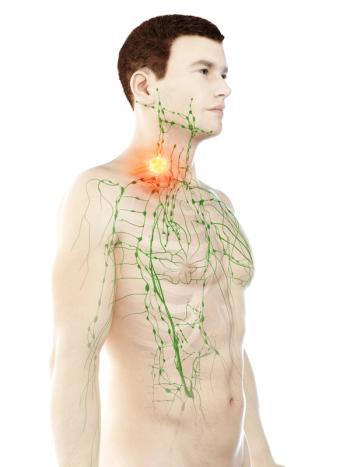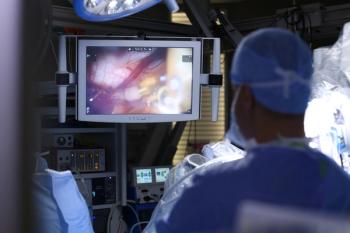
CancerNetwork® spoke with the CEO of Nanobiotix and an assistant professor of Oncology at John Hopkins Medicine to learn more regarding the potential of the radio enhancer NBTXR3.

Your AI-Trained Oncology Knowledge Connection!


CancerNetwork® spoke with the CEO of Nanobiotix and an assistant professor of Oncology at John Hopkins Medicine to learn more regarding the potential of the radio enhancer NBTXR3.

OmniSeq is partnering with the University of Pittsburgh Medical Center to employ a gene expression assay investigating the potential for personalized immunotherapy combinations for patients with head and neck squamous cell carcinoma.

The phase 3 KESTREL trial demonstrated that combination treatment with durvalumab plus tremelimumab did not display an overall survival benefit in “all-comer” patients with metastatic head and neck squamous cell carcinoma versus the EXTREME regimen.

Data from this international study further developed the field of head and neck cancers, elaborating on contributions from key cancer-associated genes, proteins, and signaling pathways.

Investigators found that the number of metastatic lymph nodes and the presence of extranodal extension are complementary for predicting disease-specific survival in head and neck squamous cell carcinoma, suggesting the necessity of incorporating these factors into staging systems.

A study found that patients without recurrence of their oropharyngeal cancer at 5 years who were treated with intensity-modulated radiation therapy and had less tobacco exposure experienced optimal survival, but still had poorer outcomes when compared with the general population.

A group launched by the Global Health Research Unit of the National Institute for Health Research, which is currently seeking to determine the best surgical practices for cancer treatments, found that there is no additional risk of contracting COVID-19 for patients with cancer of the head and neck.

“This might raise the potential of being able to detect disease recurrence much earlier than current clinical practice,” said Thomas Weiland, MD.

In working patients with head and neck cancer receiving radiotherapy, weight loss and an increase in pain, fatigue, and ECOG status were all found to be significantly associated with reductions in working days per week.

According to this study, patients with locoregionally advanced head and neck cancer with a higher risk of cancer progression relative to competing mortality, defined by a higher ω score, selectively benefit from more intensive treatment.

Researchers found that Black non-Hispanic patients with head and neck cancer present with later stage at diagnosis and receive less treatment following their diagnosis compared to patients in all other racial and ethnic groups.

A combination of peritumoral radiomics features appeared to improve the predictive performance of intratumoral radiomics to estimate pathological complete response after neoadjuvant chemoradiation in patients with esophageal squamous cell carcinoma.

The first-in-class inhibitor of apoptosis protein (IAP) antagonist significantly improved overall survival in patients with LA-SCCHN.

Researchers indicated that these findings suggest, “an ENE detection biomarker based on TP53 mutation detection would represent an enormous clinical benefit.”

The tool was developed “with the objective of providing transparency and facilitating surgical prioritization for treatment providers.”

Researchers found that transoral robotic surgery “seems safe and effective compared to what’s been the standard of care for many years” for patients with early-stage oropharyngeal squamous cell carcinoma.

A phase 2 study found that data from a 3-year follow up showed statistically significant improvements in overall survival for patients with high-risk locally advanced squamous cell carcinoma of the head and neck treated with an IAP antagonists with chemo-radiation therapy.

The implementation of optimized workup as a diagnostic workup in patients with head and neck cancer led to a significant reduction in the time-to-treatment interval.

Researchers in Japan established optimized treatment modalities for patients with HPV-related oropharyngeal squamous cell carcinoma based on data from the Head and Neck Registry of Japan.

A study conducted by the Roswell Park Comprehensive Cancer Center found that patients undergoing radiation therapy for head and neck cancers were at a higher risk of less-favorable outcomes if they were unexpectedly hospitalized for dehydration, fever, or other ailments.

This study demonstrated a possible advantage in overall survival for patients taking NSAIDs during chemoradiation for head and neck squamous cell carcinoma.

The tool was shown to be a reliable and accurate tool for measuring patient-reported financial toxicity in patients with head and neck cancer.

The study of temsirolimus and cetuximab versus temsirolimus alone in patients with recurrent or metastatic cetuximab-resistant head and neck cancer did not meet its primary end point of improved progression-free survival.

This study is the first of its kind to report modest, promising clinical activity with tipifarnib in this patient population.

The FDA approved an expanded indication for the HPV 9-valent vaccine, recombinant for the prevention of oropharyngeal and other head and neck cancers caused by HPV types 16, 18, 31, 33, 45, 52, and 58.